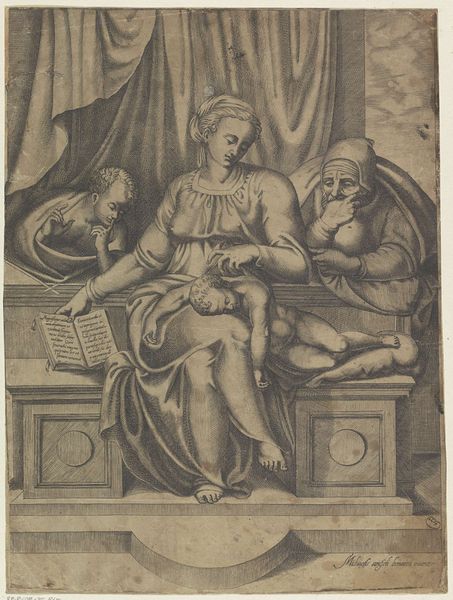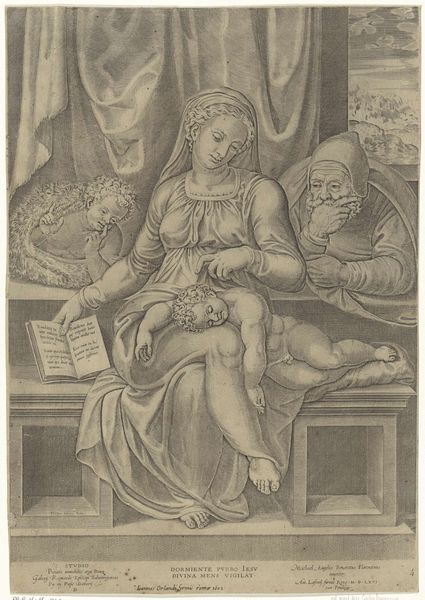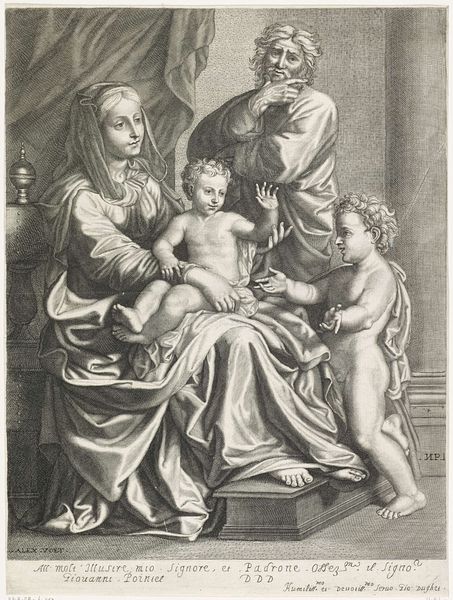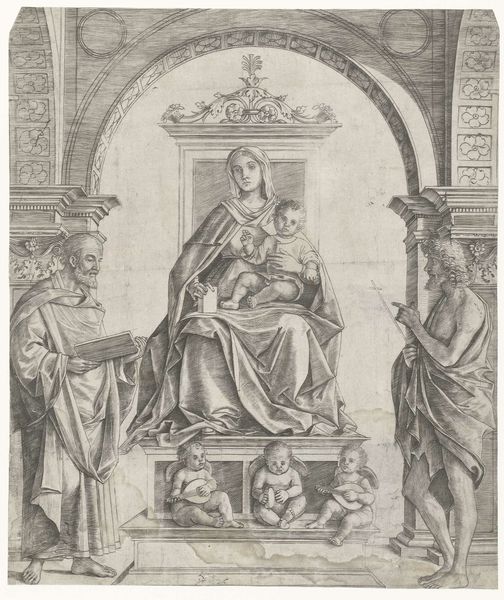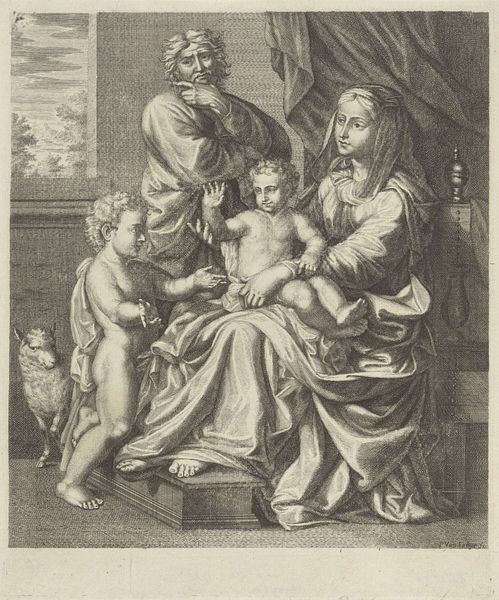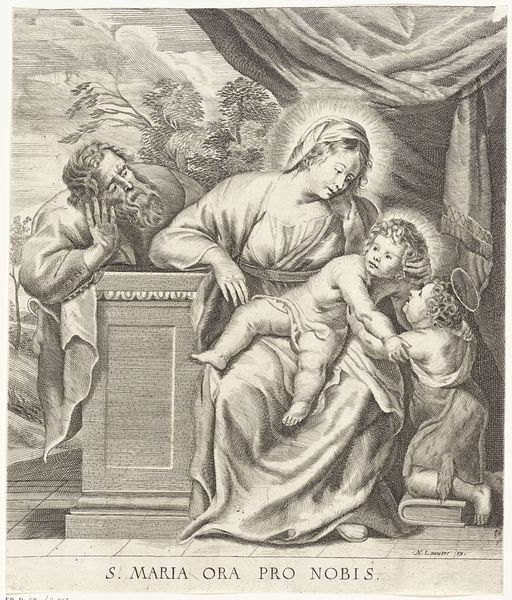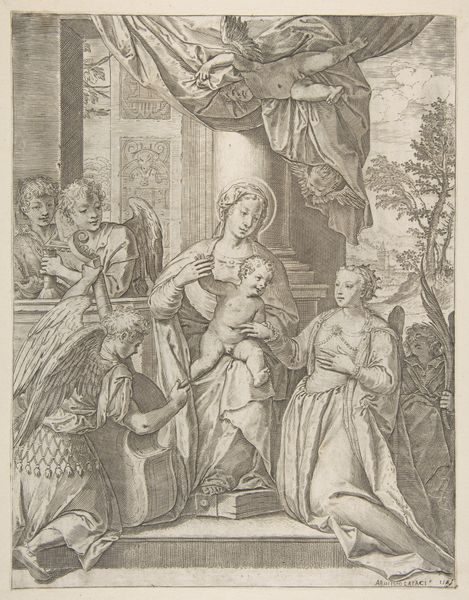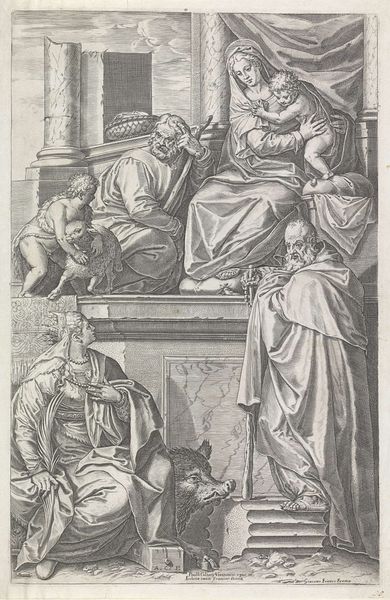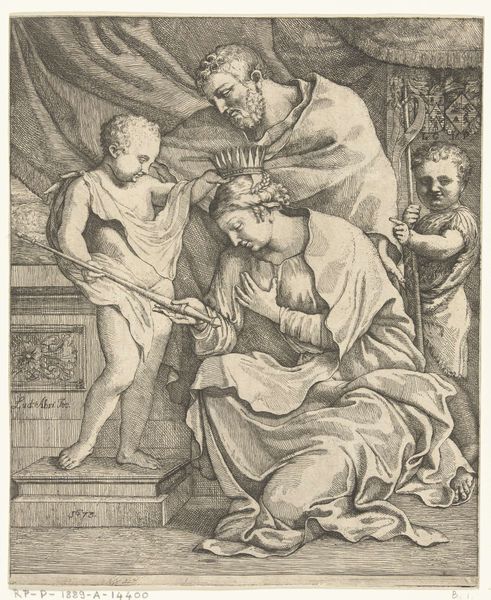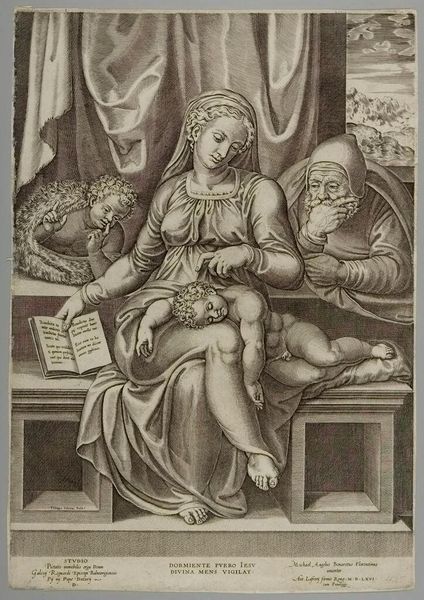
print, engraving
#
portrait
# print
#
figuration
#
history-painting
#
italian-renaissance
#
engraving
Dimensions: height 385 mm, width 285 mm
Copyright: Rijks Museum: Open Domain
Curator: The piece before us, residing here at the Rijksmuseum, is "Holy Family with the young Saint John the Baptist," a print, specifically an engraving, dating back to somewhere between 1501 and 1580, made in the style of the Italian Renaissance. Editor: The mood strikes me as pensive and somewhat heavy. The engraving technique gives it a stark quality, all the lines… like they’re tracing shadows. The composition, with the figures so close, almost claustrophobic. Curator: Claustrophobic is a strong word, but it's certainly intimate, wouldn't you say? Perhaps reflective of the inward turn of religious devotion at the time, contrasted against political upheaval in the Italian states? The engraving reproduces a design attributed to Michelangelo. Editor: Absolutely, I'd agree it's a particularly devout period. But if we see it also in terms of say, motherhood— Mary’s quiet gaze, seemingly oblivious to everyone but baby Jesus on her lap, speaks volumes about the expectations and constraints placed upon women as the emblem of reproduction and innocence. Curator: I think you read that so clearly. But note how Joseph’s presence at the upper left is so crucial, and what does John the Baptist bring? As a viewer, my eye jumps to that second child with ease, in that second "window" with a finger up. The artist creates almost two versions of a family portrait, where Jesus sleeps through both! Editor: Ha! But his slumbering pose, combined with the older Joseph covering his mouth suggests something unsettling about purity and sacrifice… Almost as though the promise of immortality demands its price, in a morbid anticipation of an inevitable doom? It certainly is *thought-provoking*. Curator: Precisely. And those markings! The placement of all those markings on Jesus... almost too intimate of an intrusion! One wonders, if he wakes, what marks will mark him... metaphorically, right? Editor: Yeah. It feels like it speaks to how vulnerable subjects are...to having their stories told, and sold, in someone else’s image. The print medium really accentuates that tension. Curator: An amazing discussion and definitely layers on new ways for visitors to read the scene, even in the dark lines! Editor: Agreed. So many questions of gender, expectation and mortality swirl about a very specific and devotional Renaissance moment.
Comments
No comments
Be the first to comment and join the conversation on the ultimate creative platform.

